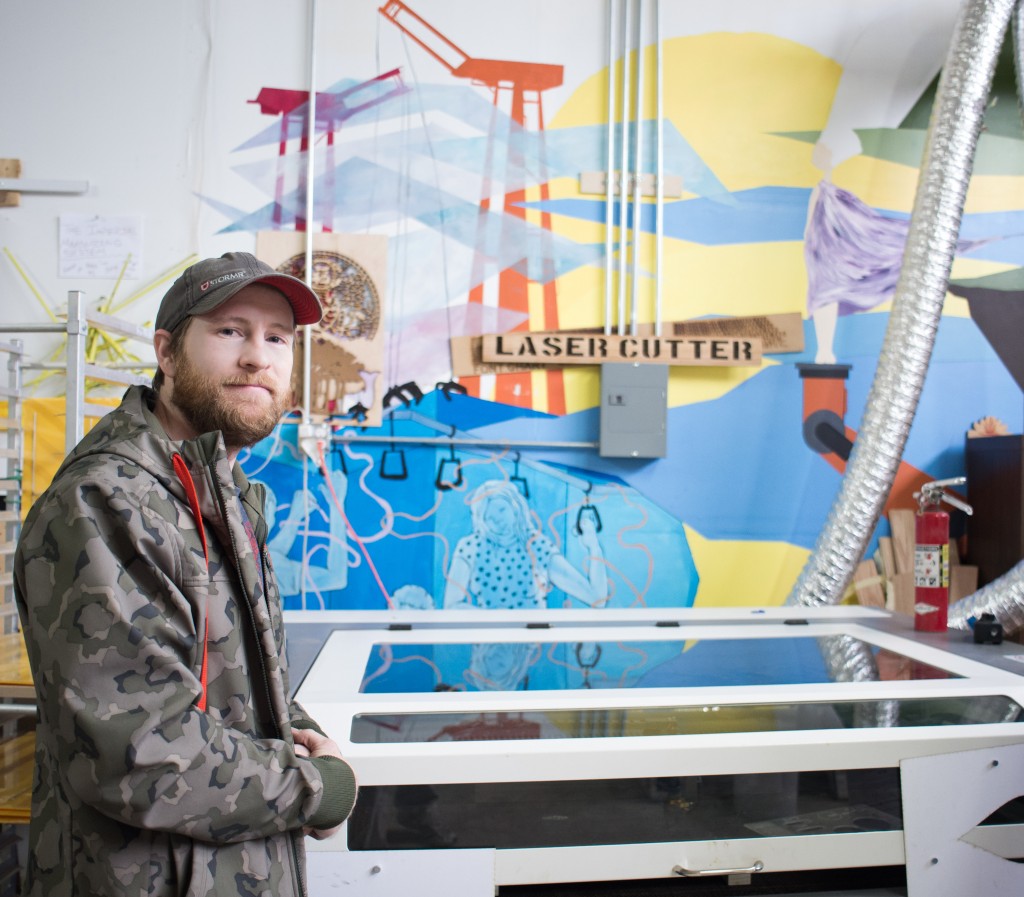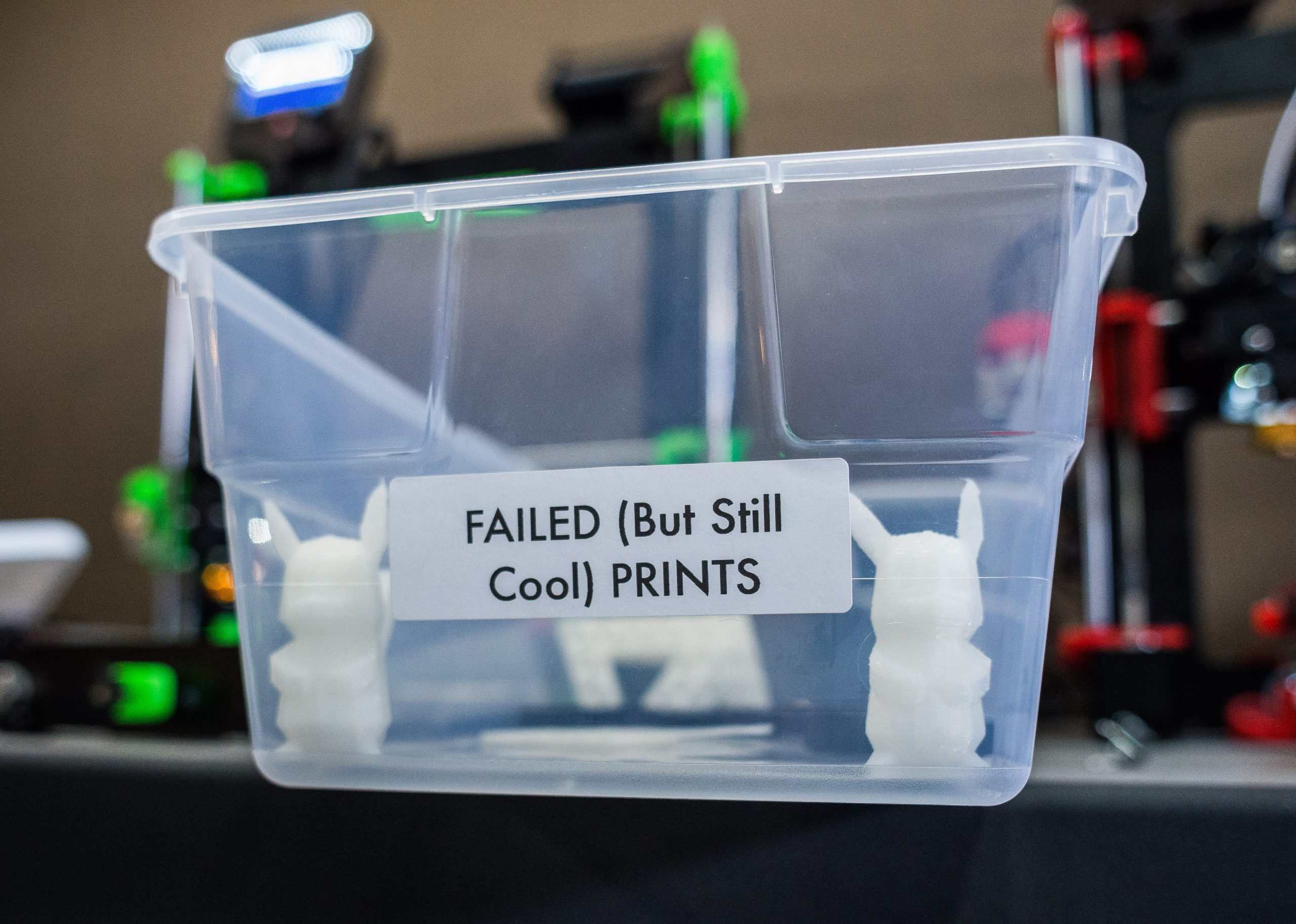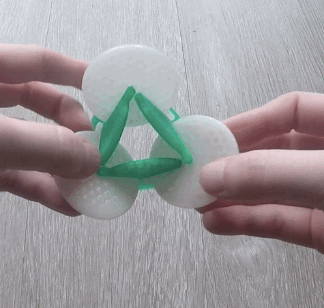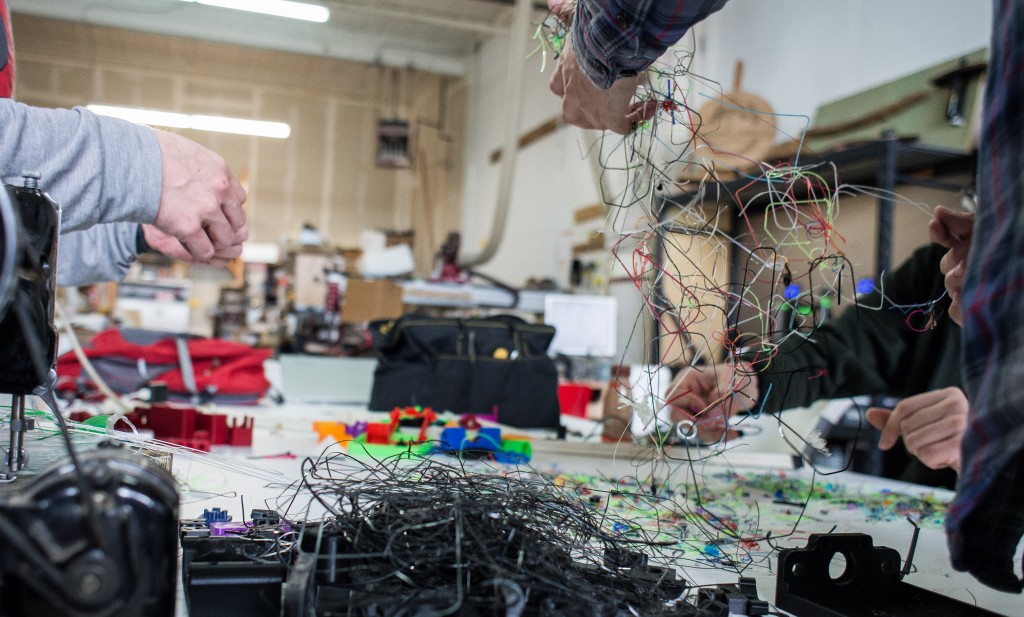
“What do you want to make?”
This was the first question that Eric Renn, founder of SoDo MakerSpace (SMS), asked me when I first visited just over a year ago, and it caught me off guard. I’ve been a professional writer for a decade—first in industry, then in academia—but I’ve never thought of myself as a maker. And I had certainly never used the tools and machines I saw, many of them for the first time, in SMS. I was intrigued and determined to learn more about SMS and about the relationship of writing and rhetoric to other forms of making, especially given our field’s interest in materiality and, specifically, in making (Haas, 2007; Powell, 2012; Sheridan, 2010; Sherrill, 2015), tinkering (Craig, 2014; Sayers, 2011), hacking (Ballentine, 2009; Cummings, 2013), and crafting (Prins, 2015).
Over the last year, I’ve been collecting ethnographic data for my dissertation, which is a rhetorical case study of making practices in SMS.* I’ve watched SMS, which had only been officially open a few months when I first visited, grow and evolve. I’ve learned the stories of the makers, machines, and projects in SMS, and I’ve experienced the exhilaration of “going from idea to object”—as Eric describes the process of iteration—using technologies I’d never imagined I’d use, like a laser cutter or a 3D printer. And these experiences have changed the way I think about writing and rhetoric. For example, practices of rapid prototyping I’ve observed and discussed with makerspace participants have given me useful ways to approach writing about my research in my dissertation.

I have also seen my own thinking about the relationship of writing and rhetoric to other forms of making change. When I began this dissertation project, I was thinking about how makerspaces might inform or even transform how we teach and study writing and rhetoric. I wondered how studying the making and transfer of knowledge across 3D fabrication tools in a highly collaborative, creative space might help us better theorize and teach rhetorical dexterity as students compose across media, genres, and languages. I wondered how teaching 3D printing alongside alphabetic writing might help students transfer rhetorical skills across modalities and media. At the same time, as I have talked about my project with colleagues and mentors, I’ve been asked many times how and why studying a makerspace is relevant to composition. These were the initial questions with which I approached my dissertation research, and my work toward answering these questions has led me to more questions. These new questions—which I’m sharing below—are the questions that I am considering now as I’m writing the data chapters of my dissertation and thinking about what I’ve learned in the makerspace.

The relationship of writing and rhetoric to making. It has been tempting, in justifying my project to curious (or skeptical) colleagues, to follow the “everything is writing” (or “everything is rhetoric”) line of argument described by Jonathan Alexander and Jacqueline Rhodes (2014). But Alexander and Rhodes pointed out that everything is not, in fact, writing, and that we ought to acknowledge the different logics and affordances of different media. In my conversations in SMS, I’ve found that sometimes people see similarities between writing and 3D making, but sometimes they don’t. As I consider 3D making practices in relation to my own writing practices, some of the strategies and terminology—like rapid prototyping (instead of drafting) and failing fast (in addition to or instead of revising), for example—do seem to map onto writing in interesting ways. But sometimes the processes and products of 3D making do more to highlight the differences between alphabetic writing and 3D making. For example, when Tony Loiseleur, one of the makers in SMS, introduced me to the 3D printed object in the above gif, he didn’t describe or name or explain it; he just handed it to me, and I was immediately enthralled with the infinite, kaleidoscopic motion. Even when I asked for a name to describe the object, he demurred, pointing out that “sometimes you don’t have to say so much as just show.” (Eventually, when he found it on Thingiverse again to print another one, he shared that it’s called a “spatial manipulation toy” there.)
Furthermore, I find that there is more going on than humans persuading other humans with linguistic, gestural, or 3D rhetoric: there are interactions between humans, machines, and objects that challenge the subjectivity, individuality, and intentionality traditionally associated with the rhetor/writer. And while some of these entangled, more-than-human interactions also describe the highly networked and distributed ways in which we write, I have become less convinced that we should expand definitions of “writing” and “rhetoric” to include the more-than-discourse and more-than-human and more compelled, instead, to attend to the entangled and differential processes by which things like “human,” “machine,” “writer,” “maker,” and “rhetoric” come to be recognized as such (or not recognized as such). This has led me to ask methodological questions like
- How can we better study the entanglement of writing with other forms of making? How can we study the entangled and differential processes by which things like “human” and “maker” and “rhetoric” come to matter?
- What sites, in addition to makerspaces (which represent only certain kinds of making), can help us seek out and study that entanglement?

Inclusivity and Access. One thing I’ve been struck by, in my conversations with people in SMS and in my research on conversations in the maker movement, is the tension between goals to democratize access to fabrication technologies and the reality that SMS, like the maker movement, tends to skew male and white (Maker Media’s own research on maker faire participants confirms this). Eric and his colleagues at SMS are aware of this issue and have expressed from the beginning a commitment to making the space inclusive for women and people of color.
Clarissa San Diego, a co-founder of SMS and an international community strategist specializing in growth hacking and community management for hardware, IoT, and maker industries, is passionate about diversity in tech. She believes the lack of diversity in hardware—including the 3D fabrication technologies associated with the maker movement—is an issue of environment, of “seeing someone like you.” (Sylvia Martinez [2015] made a similar observation.) While Clarissa and her colleagues engage in the work of advocating for more diversity, others, such as Debbie Chachra (2015) and Amy Nguyen (2015), have pointed out that the privileging of the kinds of making associated with the maker movement and the tech industry in general is a gendered privileging of traditionally male practices. And as Sarah Fox, Rachel Rose Ulgado, and Daniela Rosner (2015) have observed, feminist hackerspaces are emerging to provide alternatives to male-dominated hackerspace environments. Furthermore, as Kate Losse (2016) has noted, “failing fast” and “failing upward” are entangled with privilege: especially being white, male, and connected to capital. This suggests to me that as we consider the exciting and expansive possibilities of exploring 3D fabrication in relation to writing, we should also consider the ways in which these technologies and the practices and values surrounding them are not neutral. This has led me to ask questions like
- What and who matter, and what and who are excluded from mattering by the environments created around technologies of making?
- If increasing access to technologies of making is our goal, then how can we achieve the critical and transformative levels of access—beyond simply providing material access—that Adam Banks (2006) argued is necessary?
These are some of questions I’m pondering, and I hope to hear from you—in the comments here, and in future conversations—your thoughts on these questions and what questions you’re considering.
*My study was reviewed and exempted by my institution’s Human Subjects Division.
References:
Alexander, J., & Rhodes, J. (2014). On multimodality: New media in composition studies. Urbana, IL: National Council of Teachers of English/Conference on College Composition and Communication.
Ballentine, B. D. (2009, Fall). Hacker ethics & Firefox extensions: Writing and teaching the ‘grey’ areas of web 2.0. Computers and Composition Online.
Banks, A. (2006). Race, rhetoric, and technology : Searching for higher ground. Mahwah, NJ: Lawrence Erlbaum.
Chachra, D. (2015). Why I am not a maker. The Atlantic. Retrieved from http://www.theatlantic.com/technology/archive/2015/01/why-i-am-not-a-maker/384767/
Craig, J. (2014). Makers and makerspaces: Teaching composition in a creative economy. Pearson. http://unwrite.org/pearson/
Cummings, R. E. (2009). Lazy virtues: Teaching writing in the age of Wikipedia. Nashville, TN: Vanderbilt University Press.
Fox, S., Ulgado, R. R., & Rosner, D. K. (2015). Hacking culture, not devices: Access and recognition in feminist hackerspaces. In Proceedings of CSCW ’15, March 14-18, 2015, Vancouver, BC, Canada. http://dx.doi.org/10.1145/2675133.2675223
Haas, A. (2007). Wampum as Hypertext: An American Indian Intellectual Tradition of Multimedia Theory and Practice. Studies in American Indian Literatures 19(4): 77-100.
Maker Media. (2015). Fact sheet. Retrieved from http://makermedia.com/press/fact-sheet/.
Martinez, S. (2015). Making for all: how to build an inclusive makerspace. edSurge. Retreived from https://www.edsurge.com/news/2015-05-10-making-for-all-how-to-build-an-inclusive-makerspace
Nguyen, A. (2015). The pie is rotten: Re-evaluating tech feminism in 2016. Model View Culture. Retrieved from https://modelviewculture.com/pieces/the-pie-is-rotten-re-evaluating-tech-feminism-in-2016
Powell, M. (2012). 2012 CCCC Chair’s Address: Stories Take Place–A Performance in One Act. College Composition and Communication, 64(2), 383-406.
Prins, K. (2015). Materiality, craft, identity, and embodiment: Reworking digital writing pedagogy. Retrieved from ProQuest Dissertations and Theses.
Sayers, J. (2011). Tinker-centric pedagogy in literature and language classrooms. In L. McGrath (Ed.), Collaborative approaches to the digital in English studies. Logan: Utah State University Press/Computers and Composition Digital Press.
Sherrill, J. (2014). Makers: Technical communication in post-industrial participatory communities. Unpublished thesis. Purdue University.
Sheridan, D. (2010). Fabricating consent: Three-dimensional objects as rhetorical compositions. Computers and Composition, 27, 249-265.

2 Comments
My mother engages in the typically-female “making” we call “crochet.” My whole life I have watched her make odd little un-nameable experimental “things” just to see what they would look/feel like. Some of them she unravels and some of them she keeps — because they are “cool failures.” As with all practices consider “typically male” or “typically female” there’s a tendency to consider the things males think are cool “objectively cool” and the things that females think are cool “crazy cat lady s#!t.” But what my mother does with crochet experiments is also a kind of “failing fast,” and the things she creates are often very neat, and very useful. The difference between making out of yarn and making out of melted plastic is the difference between a crochet hook (79 cents) and all the maker equipment (lots more than 79 cents). There are some real artists who sell very unexpected crocheted objects on etsy. You should check them out.
Thanks, Amy! A great reminder about how gendered/ing practices matter not only in what counts as “making” but also in what is seen as “cool.”